The Hifiman EF499 was kindly provided free of charge in exchange for an honest review. I didn’t receive monetary or any other kind of compensation and I don’t use affiliate links.
The price of the EF499 is $299 and can be ordered directly from Hifiman’s official store or €349 for customers within the EU that can get it from Hifiman’s EU store.
Hifiman (the obligatory introduction)
In the rare case that you don’t know who Hifiman is, let’s invite AI to introduce the brand.
“Hifiman is a high-end audio manufacturer renowned for their pioneering planar magnetic headphone technology. Founded in 2007 by Dr. Fang Bian, the company quickly became a leader in audiophile innovation. Hifiman’s lineup spans reference-class to entry level headphones, IEMs, headphone amplifiers and DAC/amps, blending cutting-edge acoustic design with premium materials to deliver uncompromising sonic performance.”
However, instead of reading boring introductions, the best way to get acquainted with the brand is to read more reviews in order to get to know their products.
Hifiman EF499
It all started with the Hifiman EF400, a desktop headphone amplifier and R2R DAC combo that received much praise from audiophiles around the world.
Following the success of the EF400, Hifiman decided to introduce three more similar devices, the EF499, EF500 and EF600 (from the least to the more expensive) each one with a different DAC set-up.
The EF499 is the entry level model in the EF series and unlike all others, it is the only one that doesn’t use Hifiman’s own developed Hymalaya R2R DAC modules. Instead, it uses one NOS Philips TDA D/A converter. The exact model is not disclosed and the markings on the chip itself are carefully washed out, but judging from its size and appearance it looks like the TDA1543. It could be the TDA1387 but it is far less common. What matters the most though is that it is a Phillips TDA chip and the exact model is of lesser significance.
The DAC supports sampling rates up to 24bit/192kHz PCM and DSD64, not much by modern standards but enough to cover a lot of use cases. The Philips TDA chips are capable of decoding 16-bit audio so 24-bit are truncated to 16-bit.
The discrete balanced headphone amplifier is capable of delivering up to 4.35W*2/32Ω or 1.28W*2/32Ω from its single-ended output.
The carefully designed power supply is built around a low-noise toroidal transformer with separate rails for the analog and the digital boards.
Except for the USB and coaxial digital inputs, the EF499 also has an embedded LAN media streamer that allows the user to enjoy streaming services or play files from a NAS drive.

Design and build quality
The rectangularly shaped chassis of the EF499 is made from a plain metal sheet that is thick enough and comes with a smooth black finish without visible blemishes.
Unlike the other models of the EF series that have aluminum front panels, the EF499 goes with an acrylic one in order to stay more affordable. It has a glossy black appearance with golden letters. A visually appealing combination but the acrylic material is more sensitive and prone to scratching than aluminium.
The EF499 is designed to be used in a space-saving, vertical position where it also doubles as a headphone stand. You can’t place it horizontally because the printed letters are aligned for vertical placement and the unit doesn’t have feet.
The EF499 is a solidly built and durable device, featuring high-quality aluminum knobs and industrial-grade connectors. However, it lacks the fully premium look it would have if the entire chassis was made from aluminum.
Connectivity
The device offers both USB-B and USB Type-C inputs for added versatility, along with a coaxial digital input and a LAN port for the built-in media streamer. A function switch allows you to toggle between the coaxial input and the USB/LAN inputs.
On the rear panel, you’ll find stereo XLR balanced and RCA single-ended analog outputs, allowing the EF499 to function as a standalone DAC. The power socket and main power switch are also located on the back. There’s no power switch or standby mode on the front panel.
Headphone connectivity is covered by 4-pin XLR balanced and 6.35mm single-ended outputs that are located at the front. The 4-pin XLR plug is starting to become obsolete so an additional 4.4mm plug (that is more widespread) would be more handy.

Operation
You can use the EF499 as a traditional DAC by connecting it through the USB and coaxial digital inputs or utilize the embedded LAN streamer. Most platforms work driver-free except for Windows where you must download and install the driver.
The streamer supports both DLNA and Airplay protocols but it doesn’t have its own application. However, you can use a third party app like BubbleUPnP to access streaming services or files stored in network attached drivers. The steamer is Roon ready and supports gapless playback as well as Spotify and Tidal connect. Spotify lossless is not working and the sampling rate is limited to 320Kbps so Hifiman must issue a firmware update in order to make it function well.
The headphone output level is adjusted by the volume control knob while you have the option to switch between high and low gain. The DAC supports two decoding modes, Oversampling (OS) and Non-Oversampling (NOS) that are selected by the same gain switch in the following order: low gain NOS, low gain OS, high gain NOS and high gain OS.
The analog outputs at the rear are of a fixed level so volume control and gain settings are not effective, however you can choose between OS and NOS DAC modes. Connecting headphones will not mute the line outputs that remain active.

Power output and noise
The headphone amplifier of the EF499 is very powerful and can easily drive difficult loads like the Hifiman Susvara. Everything else is just a piece of cake for the amp, with headphones like the Hifiman HE1000 Stealth and the Meze Audio Poet, I didn’t need to reach for high gain. One downside of these excessive power reserves is that the low gain is not optimized for very sensitive loads that can get loud very fast.
I haven’t checked the noise floor with sensitive earphones but with all the other headphones that I have used, the EF499 was totally silent without transformer hum or background noise. The chassis warms up a little bit during operation but not too much.
All listening tests were performed with pure silver cables by Lavricables .
Listening impressions
The general sound signature of the EF499 is a balanced mix of classic R2R warmth and timbre with a surprisingly luminous and lively treble that can rival D/S DACs.
The bass is full bodied and visceral with rich textures that are not dry or flat. It is well defined, swift and controlled enough with good timing but it also has a somewhat looser structure that make it appear as more elastic and relaxed than technically upfront. The low-end is flat and neutrally tuned but it has an enjoyable inner warmth that is not that much to stand over the rest of the frequencies and mess up their presence and clarity. The bass is strong and impactful with extended dynamic range and gets even punchier when listening through the headphone amplifier.
The real R2R magic happens in the mid-range which seduces with its natural tonality, the colorful harmonies and the analog-like timbre. The mids have an organic quality to them, they are melodious and expressive but without lacking that much transparency. The textures are rich and fleshly yet clean and defined enough. The TDA DAC chip is competitively resolving and refined but its biggest strength is that it manages to blend musicality and technical fidelity, two opposing properties, into a cohesive sonic result.
More listening impressions
The treble is where the EF499 slightly departs from the norm as it is brighter and more sparkling than someone would have expected judging from the lows and the mids. It seems that Hifiman has opted to go for a more technical and transparent presentation to avoid an overly mellow or too smooth sound signature. The higher frequencies shed plenty of light and add energy to the music without leading into excessive brilliance.
The presentation is airy, clean, and well-defined, with fast transients and respectable resolution for its class. While the Philips TDA chip can’t quite match modern counterparts in terms of technical performance and fidelity, it’s fair to say it doesn’t lag far behind either, especially considering its age. Performance could have been better if Hifiman used more TDA chips in parallel but that would make the EF499 much more expensive.
The textures are not the most refined or polished but they are very organic and completely lack digital artificiality that is usually associated with D/S DACs. The high pitched instruments sound natural and realistic without metallic glare or dryness and with a well timed decay.
The soundstage is big and immersive with good horizontal extension and decent depth. It is spacious and airy enough with satisfying positioning accuracy for the category. It still can’t compete in all these terms with D/S rivals or higher-tier R2R DACs but it fares quite well on its own and will not hamper headphones or external amplifiers.
Side note
All the above described sound qualities and timbral characteristics equally apply to the line outputs (especially the balanced) which are exceptionally good sounding and justify buying the EF499 as a DAC/steamer alone.
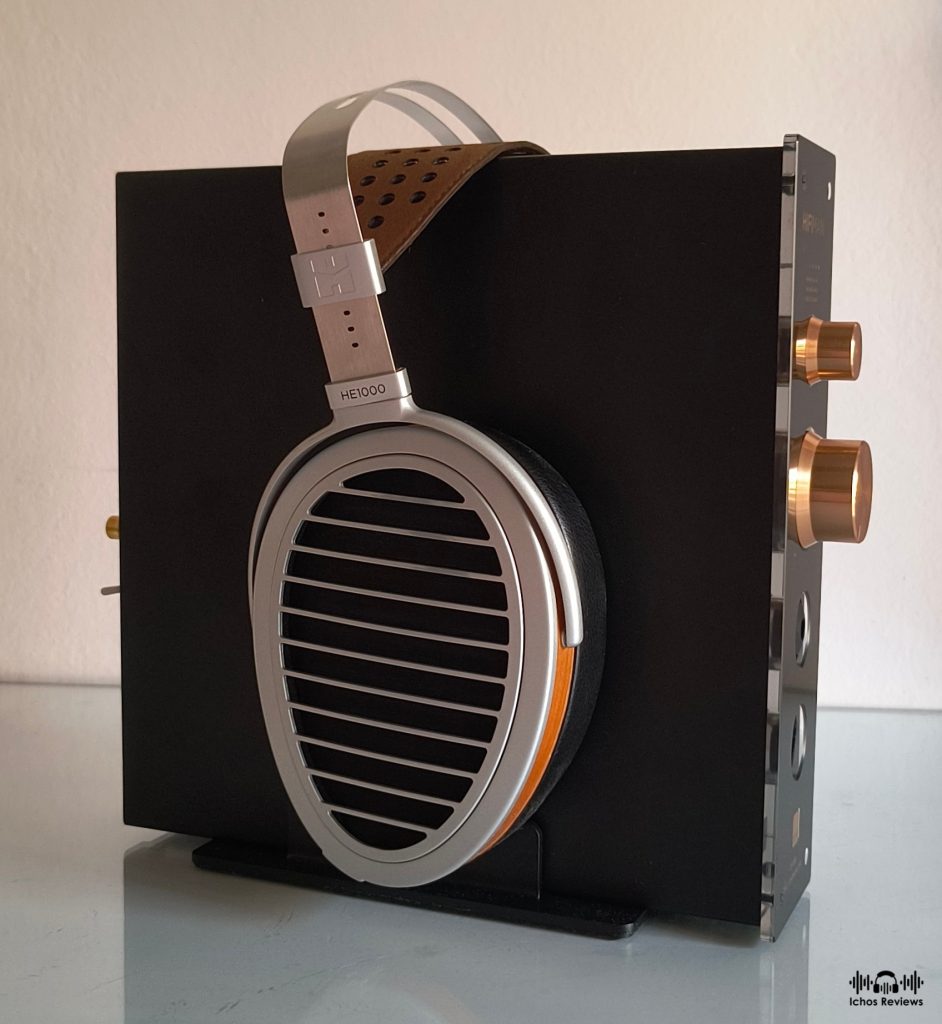
NOS/OS modes
The NOS and the OS modes are like two variations on the same theme. They sound quite alike with some subtle differences worth exploring.
The OS mode is the more transparent and technical sounding one, it produces faster bass that is firmer and more controlled. The mid-range is slightly cleaner and more resolving while the treble is more brilliant and the soundstage images in a slightly better way.
The NOS mode offers a looser and more relaxed sound approach while also emphasizing the harmonic richness and the melodic characteristics of the music but is slightly less technical skilled than OS mode while it also seems to negatively affect the textures that are less refined and polished.
Vs the EF400
Hifiman has recently lowered the price of the EF400 that now sells for $399 but it is still $100 more expensive than the EF499 and it lacks the embedded streamer as well as a coaxial input.
The EF400 (with its stock, older generation Hymalaya R2R modules) and the EF499 share the same organic and natural timbre but the latter outperforms it in clarity and transparency. The EF400 is more hazy and dull sounding in comparison to the EF499 that is more lively and offers better definition and resolution.
The actual strength of the EF400 is that it can be upgraded with the Silver or Gold Hymalaya modules that transform it into a completely different sounding beast that easily outperforms the EF499 in technicalities and fidelity while keeping the same R2R analog-like timbre.
Vs the EF500
The Hifiman EF500 is $60 more expensive than the EF499 and in exchange it comes equipped with dual Hymalaya LE R2R DAC modules instead of the Phillips TDA chip. These modules might be lower tier than the Silver or Gold variants but they still sound more technically skillful and transparent than the TDA chip while keeping the same organic and natural sound signature.
Another notable difference is that the headphone amplifier of the EF500 has a far more sophisticated circuitry with a much better power supply that has larger filtering capacity. Headphone users will definitely take this under consideration before deciding.
Comparison conclusion
While it becomes pretty apparent that both the upgraded EF400 and the EF500 can significantly outperform the EF499 when it comes to its overall technical performance and fidelity, I would still buy it because it has some unique sonic characteristics that the other two devices simply don’t have. It is not about which one sounds better or worse but rather about some special timbral qualities that only the TDA chip has.

In the end
The EF499 is a well engineered all-in-one audio device that allows its owner to experience the unique timbral characteristics of the famous Philips TDA DAC chip without sounding retro or old school.
Hundreds of high-end CD players and early DACs were made with this chip, some of them costing a fortune, but now you have the opportunity to enjoy similar sound quality at a fraction of the price.
Actually, the Hifiman EF499 is an audio device that everyone should own because of the legendary Philips TDA DAC chip that occupies a very special place in the long history of digital to analog conversion.
The remaining stock of TDA chips is getting depleted, making high-quality audio devices that use them more and more rare so you better get the Hifiman EF499 while is still being produced and before it becomes an expensive collectors item.
Copyright – Petros Laskis 2025.
+ Excellent sound quality
+ Unique timbre of the Phillips TDA chip
+ Musical and expressive mid-range
+ Good treble extension and transparency
+ Competitive technical performance
+ Zero digital artificiality
+ Powerful headphone amplifier without background noise
+ Embedded LAN streamer
+ Excellent as a standalone DAC
+ Space saving vertical placement
+ Can be used as a headphone stand
+ Well made and assembled
+ Affordable with plenty of value
- No WiFi connectivity
- No 4.4 mm headphone output
- Can't match D/S rivals in technicalities and transparency
- Not ideal for sensitive loads
- Headphones don't mute the line outputs
- Spotify lossless is not supported


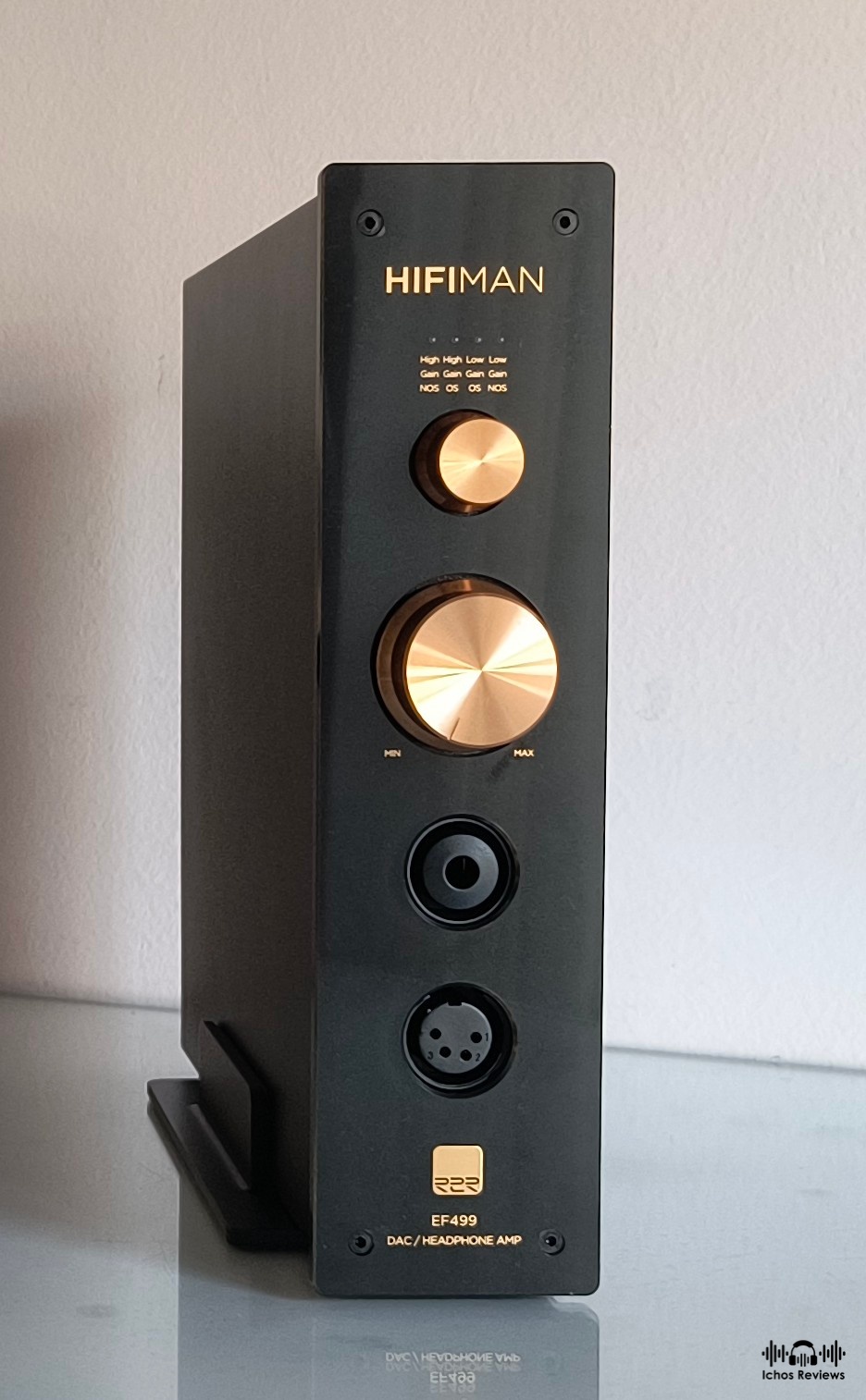


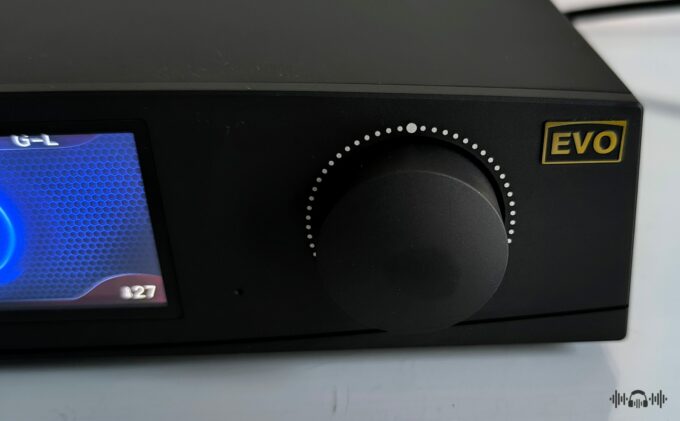


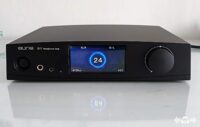


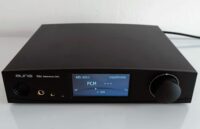
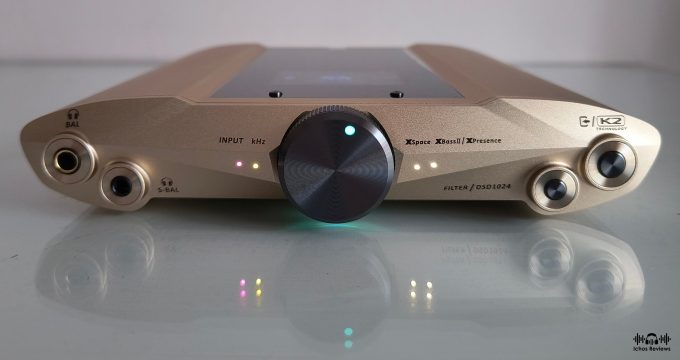
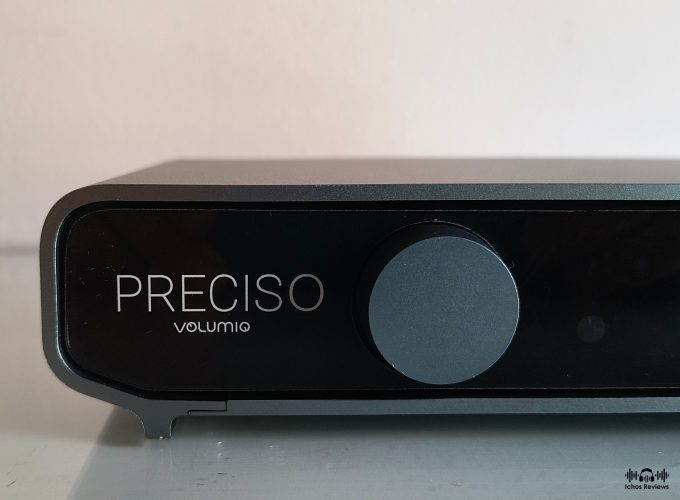
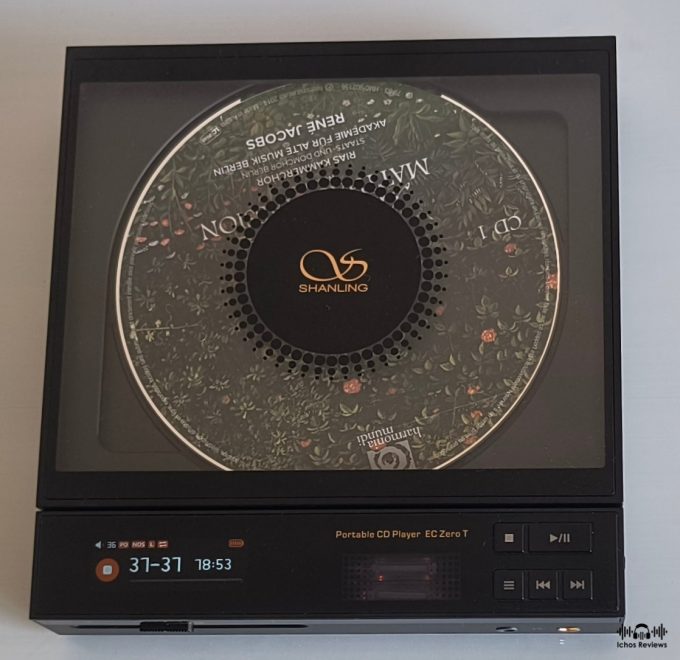

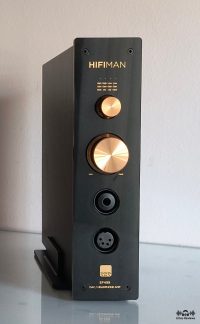

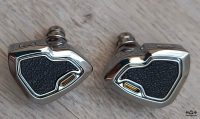
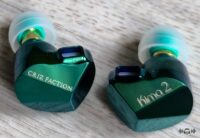


Leave a comment